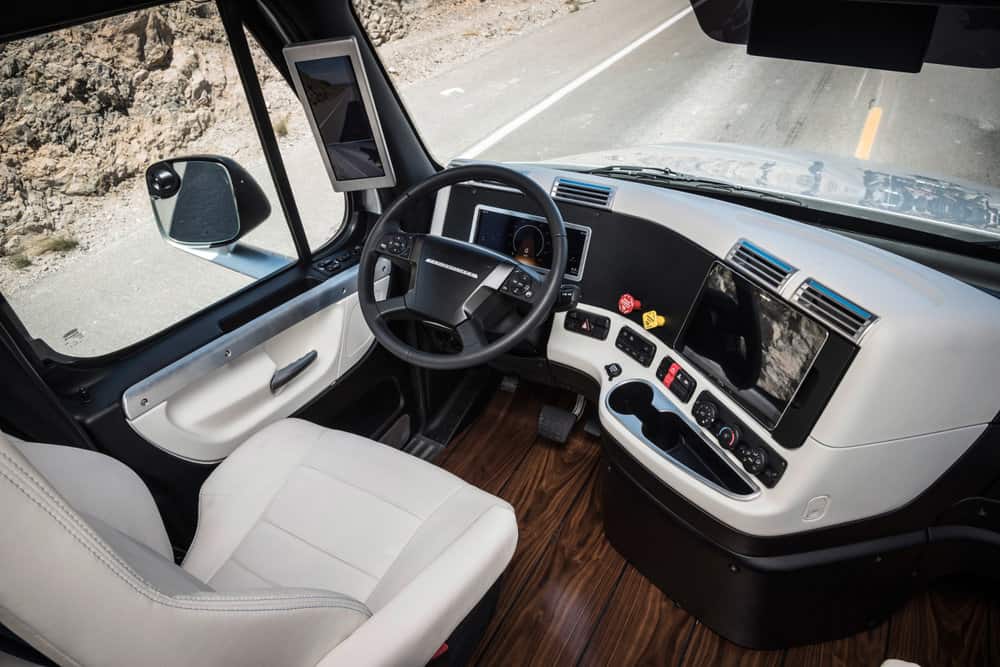
Building on its previously released Automated Driving Systems 2.0: A Vision for Safety, the U.S. Department of Transportation on Thursday released its AV 3.0 plan, officially titled Preparing for the Future of Transportation: Automated Vehicles 3.0. The updated plan will continue to focus on safety, but also on building bridges between industry and government to successfully incorporate automated vehicle technologies into the U.S. transportation system.
“While these technologies hold promise, they have not yet achieved public acceptance,” said USDOT Secretary Elaine Chao. “After several high-profile crashes, nearly three-quarters of the American public does not feel safe riding in a [fully autonomous vehicle].”
Importantly, this new 3.0 guidance incorporates all modes of the transportation system, including trucking and intermodal operations, and will lead to a potential rewriting of regulations to accommodate autonomous technologies and vehicles. It continues to encourage a voluntary reporting approach that Chao said is critical to advancing safety and compliance. It is a model that Chao said has worked effectively in the airline industry for years.
The National Highway Traffic Safety Administration is also putting out an Advanced Notice of Proposed Rulemaking that would create a pilot program for those interested in creating a national pilot program for safe testing of automated driving systems, explained Heidi King, NHTSA deputy administrator.
“While integration of fully autonomous vehicles remains a vision for the future, innovation … and testing is happening today,” said Ray Martinez, FMCSA administrator.
Chao said AV 3.0 will also streamline processes and allow USDOT to help innovators develop the technologies without choosing specific technologies.
“The government is not in a place to decide which technology should succeed, and which technology should fail,” she said.
As part of the process to achieve safe automated technologies, the document notes that FMCSA will consider changes to federal safety regulations as needed to accommodate the integration of ADS-equipped commercial motor vehicles. There will also be a Federal Register notice that will look into what roles states and the federal government should play in regulating ADS-equipped commercial vehicles.
Critically, AV 3.0 incorporates all modes of surface transportation, something previous documents did not do. Towards that, the section of the document highlighting FMCSA’s role highlights how fleets can seek regulatory relief if necessary to test ADS-equipped CMVs.
“The big difference between 2.0 and 3.0 is we are moving forward with the assumption that a human driver is not behind the wheel of these advanced levels of automation,” said Larry Minor, associate administrator for policy at FMCSA.
Minor said a notice of proposed rulemaking will follow later this year to look at what Federal Motor Carrier Safety Regulations (FMCSR) apply and which do not or need to be changed. The rulemaking will look to identify regulatory gaps including in the areas of inspection, repair, and maintenance for ADS.
Importantly, the AV 3.0 document does not say carriers can’t participate in automated vehicle testing, in fact, it does the exact opposite. The only caveat is that the vehicles and systems must sill meet all federal regulations for safety and FMCSA maintains the right to take enforcement action against a carrier or supplier for incidents occurring while the vehicle is being operated under autonomous control. For carriers that wish to test a system that does not fully comply with current FMCSRs, an exemption request can be filed.
It also eliminates the “10 pilot sites” that had previously been set up for autonomous vehicle testing. Instead, it allows for the testing of these vehicles wherever the technology is being developed.
Chao said AV 3.0 focuses takes three main approaches:
-
Providing new multi-modal safety guidance
-
Reducing policy uncertainty and clarifying roles
-
Outlining a process for working with USDOT as technology evolves
AV 3.0 also will:
-
Provide consideration and best practices for state and local governments
-
Support the development of voluntary technical standards and approaches as an effective non-regulatory means to advance the integration of automation technologies
-
Describe an illustrative framework of safety risk management stages along the path to full commercial integration of automated vehicles.
-
Affirm the department is continuing its work to preserve the ability for transportation safety applications to function in the 5.9 GHz spectrum.
AV 3.0 also incorporates rail and maritime. The Federal Railroad Administration (FRA) has been tasked with developing and demonstrating a system to improve highway-rail crossings, develop and demonstrate a concept of operations, including system requirements, for the use of automated and connected vehicles to improve safety of highway-rail crossings. The Maritime Administration (MARAD) and FMCSA are evaluating the regulatory and economic feasibility of using automated truck queueing as a technology solution to truck staging, access, and parking issues at ports.
The effort at the ports could potentially reduce the time drivers spend waiting in long queues.
“The study will investigate whether full or partial automation of queuing within ports could lead to increased productivity by altering the responsibilities and physical presence of drivers, potentially allowing them to be off-duty during the loading and unloading process,” the document states.
Martinez noted that the use of automated technologies will not only lead to more lives saved, but also provide an economic benefit to the nation through more productivity.
Finally, Chao addressed the concerns of widespread job losses due to autonomous vehicles. While not speaking specifically to trucking, she said USDOT will be working with other agencies to address this.
“I am extremely concerned about the impact of automated technology on our workforce,” she said. “So today … I am also pleased to announce that as part of this guidance the department will be working with the Department of Labor, Department of Commerce and Department of Health and Human Services to evaluate the workforce implications of automated technology.”










